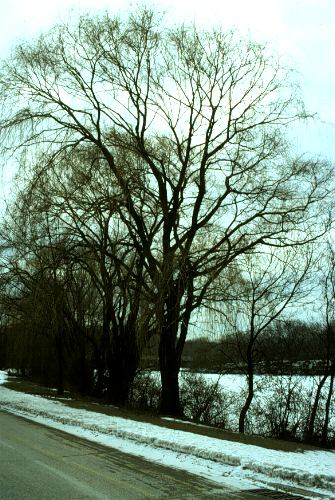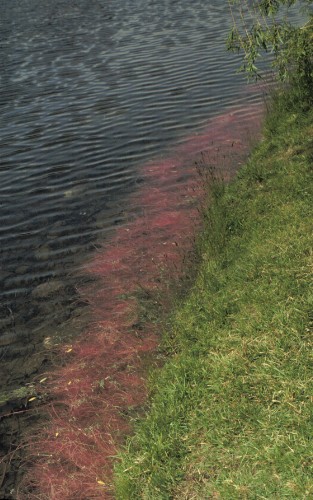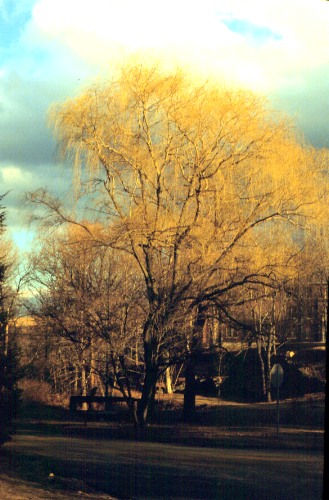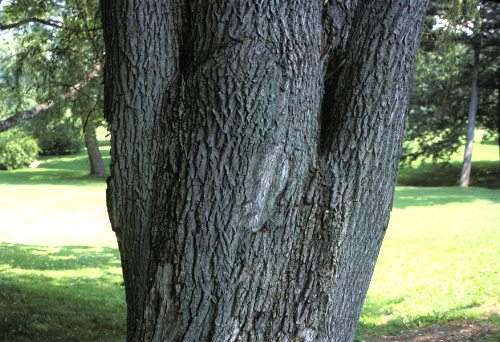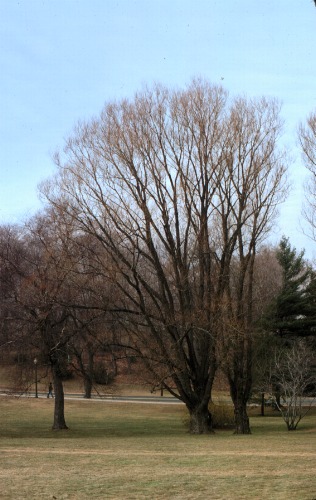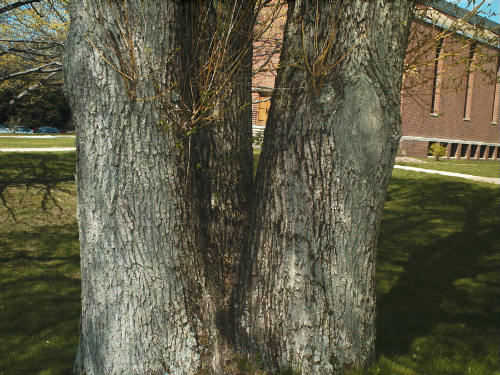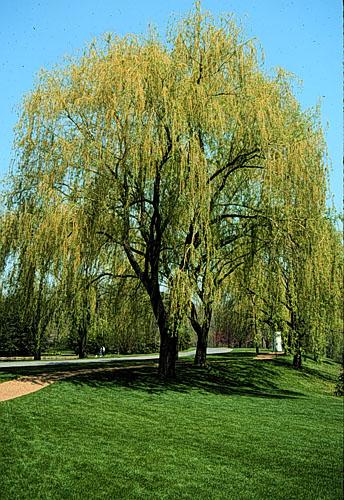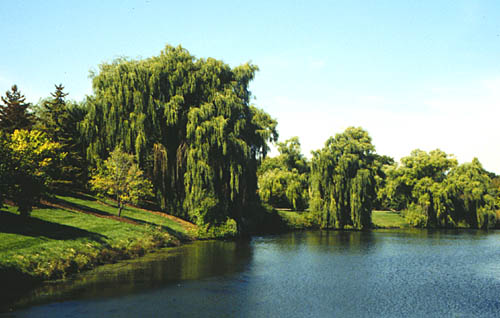Salix alba
White Willow
Salicaceae
ExpandHabitat
- native to central and southern Europe
- hardy to zone 2
- widely naturalized throughout the United States
- Special Note: This species has demonstrated an invasive tendency in Connecticut, meaning it may escape from cultivation and naturalize in minimally managed areas. For more information, .
Habit and Form
- a deciduous, large tree
- branches are low to ground
- tree has a rounded crown
- 75' to 100' by about two-thirds in width
- fast growth rate
- medium texture
Summer Foliage
- alternate, simple, deciduous leaves
- lanceolate, serrated leaves
- 2" to 4" long and about 0.5" wide
- medium green leaf color
- underside of leaves are downy with fine hairs
Autumn Foliage
- leaves turn bronze-yellow in fall
- leaves drop late
Flowers
- catkins
- male flowers showy
Fruit
- capsule containing numerous glabrous seeds
- not ornamentally important
Bark
- yellowish bark that is ridged and furrowed
- wood is very weak
- stems a medium yellow which are slender and flexible
- stems are glabrous
- bitter taste
Culture
- fast growing
- easily transplanted form containers are B&B
- prefers moist soil
- prefers to grow along water sources
- full sun
- pH adaptable
- prune in late summer to fall
Landscape Use
- good tree for wet sites
- for weeping appearance
- for fine to medium texture
- for flowers
Liabilities
- numerous insect and disease problems: cankers, aphids, powdery mildew, rusts, leaf beetles, etc.
- constant limb litter under tree
- ice and wind breakage occurs easily
- suckers
- short-lived
ID Features
- yellow, bitter tasting stems
- alternate, simple, lanceolate leaves that are serrated
- always litter under tree
- generally found on wet sites
- flowers bottle-brush like
Propagation
- by cuttings
- by seed
Cultivars/Varieties
f. argentea (also known as var. sericea and 'Sericea') - Notable for its strong silvery leaf color (both leaf surfaces), this plant reaches 60' tall and may be pruned hard to force vigorous shoots with highly colored foliage.
'Britzensis' (also known as 'Chermesina') - This form is commonly offered by catalogs for its brilliant winter stem interest. Young, vigorous shoots are colored orange-red, perhaps yellowish in warmer climates. The preferred cultural practice is to cut the plant back to a stump every spring. This treatment (known as stooling) forces vigorous young shoots with strong color. The plant can grow 10' in one season. 'Vitellina' (also known as var. vitellina) is similar, but the stem color is yellow.
'Tristis' - This is the "Golden Weeping Willow", the most common and perhaps hardiest S. alba cultivars. It can become a massive tree in time, growing 50' to 70' tall with beautiful weeping branchlets that are suspended by thick, upright branches. The stringy, pendulous branchlets are colored a bright straw yellow that is very prominent in winter. The plant has the same liabilities as the species and often sheds branches and limbs. For this reason, it is best sited away from structures and placed in large spaces, such as adjacent to water features.
